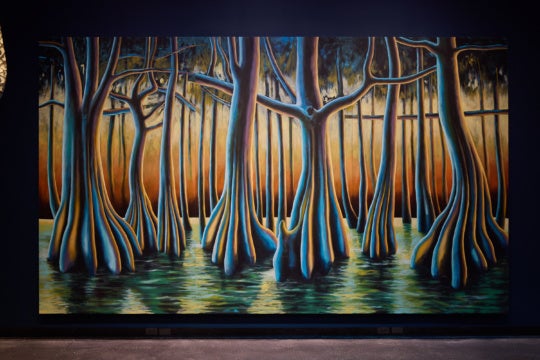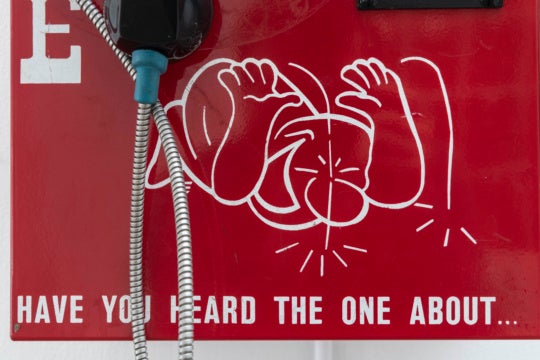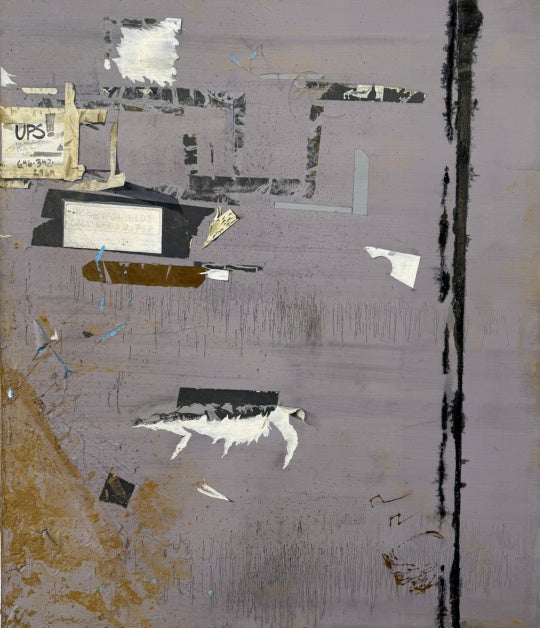Atlanta-based Smoke School of Art and New York’s tART Collective have joined forces to cut through some racist and sexist good intentions. Their collaborative exhibition “A Bad Question,” on view at WonderRoot through July 12, exclusively features works by women artists centering crucially around issues of race and gender. The exhibition’s title comes from Mia McKenzie’s article “‘How Can White Women Include Women of Color in Feminism?’ Is A Bad Question. Here’s Why.” The reading was part of tART’s current yearlong reading series, which also includes pieces on dismantling white supremacist culture and understanding intersectionality. A better question, McKenzie’s article offers, might be “when will white women make themselves worthy of the benefits they reap from the work of feminists of color?”
The exhibition, along with a feminist symposium and film screening earlier this month, represents the culmination of a two-year conversation between co-organizers Suzanne Broughel of tART and Chris Hutchinson of SSA. Founded in 2004, tART currently stands as the self-proclaimed longest-running feminist collective in New York City. The younger Smoke School of Art, a nonprofit think tank formed in 2009 by Hutchinson and fellow artists Michi Meko and Eric Mason, was conceptualized as a means of both promoting black art in Atlanta and continuing academic and creative engagement among members. “A Bad Question” prioritizes conversations about race and gender in artworks that reference broken and unexamined dominant social systems, their disastrous effects on individual and communal psyches, and the existence and evolution of different voices and modes of being.
Carina Maye’s work subverts representations of the idyllic American schoolhouse. Borrowing images of apples, desks, and chalkboards, she draws attention to perspectives not included in the formative fantasies of the American Dream. Fall in Line includes the repetition of the text “FALL IN LINE” in rows on a chalkboard. Where one iteration of the phrase was written out of line, Maye leaves a blurred, asymmetric break.
Bandages, bleach, and self-tanner build the foundation for many of Suzanne Broughel’s pieces. Looking at constructs of whiteness and commercial goods, Broughel critiques the quotidian intimacy of these associations, stark even in the concept of “nude” bandages. The titles of As Long As You Think You’re White #1 and #2 echo James Baldwin’s comment in a 1979 speech in Berkeley: “Insofar as you think you’re white, you’re irrelevant. We can no longer afford that particular romance.”
Five works from Nikki Schiro’s Yo’ Mama series appear in the exhibition, portraits of women holding or wearing name tags printed with the catcalls that most haunt them. Addressing the issue of street harassment, the nametags point to the spectral nature of misogyny, not only a problem of language but also of atmosphere, and one both scarring and oppressive.
Carla Aaron-Lopez’s mixed media collages resituate hypersexualized images of black women into fearsome, sublime scenes of raw, otherworldly power. Her collages reappropriate images of black southern culture and remap complex class and gender roles. In an essay accompanying the exhibition, Aaron-Lopez writes, “Women of color have been doing feminism since forever because we have never had the luxury of Prince Charming to come galloping through to save us from the tragedy of institutionalized American racism and sexism.”
Similarly, Ida Harris’s Ba’Beez dolls configure a different kind of exalted black feminine power. Harris’s dolls and the poetic narratives accompanying them confront the viewer with a textured, tender self-awareness, making space for representations and realities of black lives to merge with and build on each other.
Additionally, woodblock-printed textile pieces by Petra Gupta Valentová complicate ideas of inheritance and sustainable design, and a transdisciplinary community arts project by Anna Lise Jensen extends the possibilities of place-based, collaborative art-making. Rosemary Taylor’s paintings blur the lines between abstraction and the figure, side-stepping conventional modes of perception.
The exhibition also includes a thoughtful selection of video works by several artists, each addressing various disconnects between mass culture portrayals of marginalized individuals and their actual lived experiences. Sue Jeong Ka’s Alison & Pauline investigates the unwritten contract binding an immigrant domestic worker to the U.S. citizen who employs her. Set to the tune of the 80’s jingle “Get in Shape, Girl!,” damali abrams’s stop-action Escape shows images of women being cut free from various texts holding them hostage, while Uraline Septembre Hager’s Money Laundering: I’m Out for Presidents to Represent Me silently transmutes Benjamin Franklin’s face on the $100 bill into an image of an anonymous black woman breastfeeding a white child.
Elizabeth Sturges Llerena’s What’s Hidden Underneath involves a confrontation with her family’s history as some of the wealthiest slave traders in Rhode Island. Revisiting her bloodline’s historic mansion, Linden Place, while wearing a dress covered in portraits both of members of her family and (less visibly) of unnamed slaves, Llerena recites the names of her ancestors and hypnotically performs a mantra-like exorcism of the numbed and complicit:
“If I don’t feel anything, then maybe I won’t see anything. And if I don’t see anything, then maybe I won’t notice anything. And if I don’t notice anything then maybe I can just forget everything. Shhh…”
This self-deceptive silence in the face of horror serves as the foundation for an amnesiac culture that protects privilege while continuing to ignore the pervasive violence directed toward people of color. Not all artists included in this exhibition necessarily consider their work “feminist,” yet the shared goal of tART and SSA to provide support for women artists is an unequivocally feminist objective. As McKenzie’s article urges, however, feminism means nothing and accomplishes nothing if it does not recognize self-identified women of color as “the necessary center of any feminist movement.” Only then, after listening more closely, can we ask better questions of ourselves and each other.
“A Bad Question” is on view at WonderRoot through July 12.




